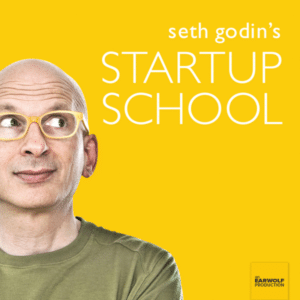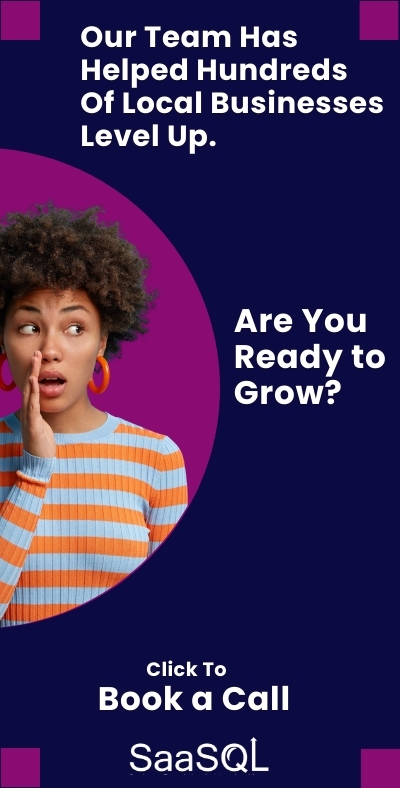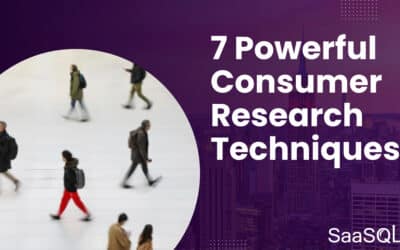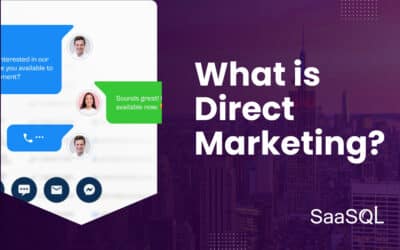Today’s marketing channels are vibrant ecosystems, teeming with interconnected players and innovative pathways. What was once a relatively straightforward combination of reach and frequency has morphed into intricate tapestries woven with digital threads, personalized experiences, and ever-evolving consumer behaviors.
For most of us, when we define marketing channels, we think about billboards, radio, social media or search. In reality, those are all subsets of Direct Selling, the most commonly used marketing channel. And while we will dedicate the bulk of this article to an examination of modern direct selling channels, having a clear understanding of the core marketing channels may enable your brand to identify unique marketing strategies that may not have been top-of mind.

Table Of Contents:
- What are the Core Marketing Channels?
- The Role of Digital Marketing Channels in Modern Business
- Why a Strategic Focus on Marketing Channels is Important
- Maximizing Visibility with Search Engine Marketing
- Influencer Marketing – A New Era of Consumer Trust
- Wrapping Up
What are the Core (Traditional) Marketing Channels?
Direct Selling (What You’re Probably Doing)
Subsets of this channel are what most of us think about when we say the word “marketing channels”. Imagine, instead delivering a “grand opening” postcard through direct mail, or setting up shop at a farmer’s market, a brand hosting interactive live streams on TikTok, collaborating with micro-influencers on Instagram, or utilizing chatbots for personalized consultations. Direct selling has shed its one-dimensional approach, embracing the boundless reach and interactivity of the digital world. We’ll talk a lot more about this channel below.
Intermediary Channels
The middleman isn’t extinct, but they’ve reinvented themselves. Think online marketplaces like Amazon and Etsy, curated subscription boxes, or niche retailers tapping into specific demographics. These intermediaries act as tastemakers, curating experiences and offering tailored selections that wouldn’t be possible for individual brands alone.
Mixed Channel Marketing
The lines are blurring. A local bakery might sell directly through their storefront, partner with a delivery app, and also supply bread to nearby cafes. This omnichannel approach caters to diverse customer preferences, maximizing reach and convenience. From a marketing perspective, this gives rise the ability to optimize into the strategic channels that provide the greatest returns.
Closed Loop Engagements
It’s not just about product recalls anymore. Brands are embracing “closed-loop” systems, encouraging product returns for refurbishment or recycling programs for responsible disposal. This not only fosters environmental consciousness but also builds customer loyalty and fuels innovation through insights gleaned from returned products.
Post-Purchase Loyalty
Here, the focus is on deepening the relationships with current customers. This highlights the customer-centric aspect of closed loop engagements, focusing on customer feedback and ongoing guidance in a way that strengthens brand loyalty and builds trust.
But the true magic lies in the hybrids and innovations emerging at the intersection of these channels. Social media communities organically promote brands, consumers become micro-influencers themselves, and even AI plays a role in personalized recommendations and targeted advertising.
The key takeaway? Today’s marketing channels are dynamic, fluid, and ever-evolving. Understanding these complexities and adapting to the changing landscape is crucial for brands to reach their target audience, build meaningful relationships, and ultimately, thrive in this dynamic new era.
The Role of Digital Marketing Channels in Modern Business
While the term “direct selling” might conjure images of door-to-door salespeople or enthusiastic home party demonstrations, modern businesses have taken this concept to a whole new level with the power of digital marketing channels. It’s no longer about a single push; it’s about strategically composing a multi-channel symphony to capture hearts, minds, and sales.
Imagine digital marketing channels as the Swiss Army knife for modern business—it’s packed with tools, each one tailored to carve out success in a different way. But what makes it so indispensable? Well, let’s peel back the layers and find out.
Why a Strategic Focus on Marketing Channels is Important
Instead of just shouting your message into the void, modern digital marketing channels enable businesses to:
Cast a wider net: Go beyond your local neighborhood and attract prospects from across larger geographic regions, targeting based on specific demographics, interests, and online behavior. Imagine personalized invitations to a product launch, delivered not through flyers, but through social media feeds brimming with engaging content. Or even better, a coordinated effort that includes both online and offline marketing channels – merging email, direct mail and streaming television, for example…all hyper targeted to an audience most likely to convert.
Nurture, don’t just pitch: Ditch the hard sell and build genuine relationships. Digital marketing channels let you create a nurturing pathway, guiding prospects through your sales funnel. Informative blog posts, interactive social media polls, and email sequences tailored to their interests gently nudge them towards a decision, fostering trust and loyalty along the way.
Dynamic cross channel marketing solutions: Digital marketing isn’t a solo act; it’s an ensemble performance. Websites serve as your headquarters, while social media platforms become vibrant, interactive stages. Search engine optimization ensures your brand is front and center in the digital spotlight, while targeted streaming video delivers unmatched levels of recall and engagement. In other words, each channel acts as an instrument, harmonizing to create a unified, impactful brand experience.
Measure the melody of success: Unlike the nebulous results of traditional direct selling, digital marketing channels provide real-time feedback. Analytics tools let you track every click, share, and engagement, revealing what resonates and what needs tuning. This data-driven approach allows you to constantly refine your strategy, ensuring your efforts are not just heard, but truly heard by the right audience. And, with the advent of machine learning (commonly referred to as A.I.), we now have the ability to seamlessly create a closed loop between data collection, analysis and real-time campaign adjustments. Ultimately, this provides us with the ability to calculate and execute thousands of marketing optimizations within a single month, dramatically improving customer acquisition costs.
Drive sales growth, not just a fleeting flourish: The ultimate goal of any marketing campaign is to convert interest into action. The best digital marketing strategies literally map the planned consumer experience as they engage with brands. With powerful tools like targeted landing pages and conversion-optimized lead forms that lead to automated nurture campaigns through email, sms text and other forms of A.I. assisted outreach, it is now possible to completely design a smooth transition from prospect to customer.
In essence, digital marketing channels have fully transcended the limitations of traditional direct selling. What was considered a new way to drive reach and frequency (in the early days of digital marketing) has become a system to build immersive brand experiences, fostering meaningful connections, and orchestrating a data-driven journey that culminates in lasting customer relationships. And, of course, the end-game of end-games: sales growth.
The trick, then, is having a clear understanding of the strategic benefits (and limitations) of each direct selling channel, so that you can design those experiences in a way that clearly aligns with the target customer.
Email Marketing – The Undisputed Leader in Lead Generation Marketing Channels
Digital marketers have long known that email is more than just virtual post; it’s a one of the marketing channels that really act as a gold mine for lead generation. With 63% swearing by its effectiveness, emails are like boomerangs—you send them out and watch as they bring potential customers right back to you. Plus, consider this: more than half of emails are now read on mobile devices, turning these targeted messages into personal pocket-sized billboards.
To nail email campaigns down to an art form means mastering personalization and timing—like sending a coffee coupon when someone might be yawning through their inbox at midday. Remember though, it’s not about flooding mailboxes; it’s about sparking genuine interest where your audience already hangs—their email app.
Display Advertising – Visuals That Capture Attention
A picture speaks louder than words but add some clickability into the mix and you’ve got display ads—a visual shout-out to anyone scrolling online. Whether nestled on social media or popping up during a Google search, traditional banner ads have become an increasingly sophisticated tool that links each of the other direct selling marketing channels to a singular goal.
In this way, it isn’t throwing paint at a wall hoping something will stick; effective display advertising hinges on utilizing intricate targeting mechanisms to track consumer behavior across various platforms ensuring every ad speaks specifically each individual consumer, while adding the level of campaign frequency that converts interest to intention.
Social Media’s Dominance in Digital Strategy
The digital era has transformed our attention spans, leaving us captivated by the endless scroll of social media. This captive audience presents an unprecedented opportunity for businesses: a direct line to potential customers within a virtual town square. Gone are the days of static profiles; brands are now building immersive worlds on these platforms, fostering communities and igniting conversations.
A Labyrinth of Opportunity Among the Most Versatile Marketing Channels
Every witty tweet or captivating Instagram story is a breadcrumb leading potential customers into a brand’s carefully crafted digital landscape. This environment, with its fleeting content and limited consumer attention spans, has still become an unprecedented platform for:
•Building Brand Awareness: Every platform presents a microcosm of society, allowing brands to connect with niche and general audiences alike. Interactive content and targeted campaigns propel brands into the limelight, ensuring that they’re not just seen, but remembered.
•Fostering Community Engagement: Social media facilitates two-way communication, transforming brands from faceless entities into approachable neighbors. Responding to comments, hosting live chats, and encouraging user-generated content fosters a sense of belonging and loyalty, turning customers into brand advocates.
•Viral Fame (and its Foe): The potential for overnight success is just a single share away. However, the proximity to infamy is equally real. Every interaction must be carefully considered, as the power of virality cuts both ways.
Beyond Profiles: In this digital town square, simply having a profile isn’t enough. Brands must actively participate, building relationships, igniting conversations, and offering value beyond product promotion. By navigating the intricate paths of social media with strategic precision, brands can transform online engagement into real-world growth and solidify their position in the minds of their target audience.
Key Takeaway:
Think of digital marketing channels as your go-to Swiss Army knife in business, with email leading the charge for capturing leads. Mastering personalization and timing can turn emails into pocket-sized billboards that reel customers back in.
Display ads grab attention with their visual appeal and strategic placement, ensuring they catch eyes exactly where users tend to linger most online.
Social media is the modern town square; it’s essential for building brand awareness and community engagement—and just a clever post away from going viral.
Maximizing Visibility with Search Engine Marketing
Any focus on capturing consumers at the bottom of the funnel, those who are showing clear purchase intent, will revolve around search engines. And, when the core aim is to capture as much of that opportunity as possible, search engine marketing, also known as paid search, PPC or Google Ads, has become the most efficient (if not cost effective) way to get the job done.
Paid search really thrives as one of the few marketing channels that combines speed to market with precision. It’s about placing your message directly in front of the right people at the right time. It’s about maximizing your chances of success by understanding your audience and delivering hyper-targeted value. By leveraging the power of Google Ads and its precision targeting, you can turn passive searchers into active customers and fuel your business growth.The only catch? You end up paying for each and every consumer interaction. This means that, if you want more business, the only option is to spend more money. And while this provides a clearly definable way to scale your business, it also serves to limit ROI and hamper organic growth.
Of course, this is where SEO comes into play.
Harnessing SEO for Organic Reach
But SEO as the most strategic of marketing channels, isn’t about magic tricks or manipulating algorithms. It’s a science-backed approach that understands how people search and what information they seek. By creating valuable content rich with relevant keywords, you speak the language of search engines and attract potential customers looking for exactly what you offer. It really comes down to crafting digital experiences that satisfies both Google’s appetite for optimized content and your customer’s hunger for actionable information.
Moz’s Beginner Guide to SEO, paints this picture perfectly: think less conquering hero and more strategic matchmaker between what folks are searching for and what you offer.
Local SEO takes this targeting further, ensuring your business shines in your own neighborhood. By claiming your Google My Business listing, optimizing for “near me” searches, and building positive online reviews, you become the local pizzeria everyone craves, easily found and ready to deliver hot, satisfying results. Most exciting for small businesses, a hyper-local SEO strategy enables companies to generate local leads in the most cost-effective way possible.
Remember SEO isn’t a standalone strategy; it’s the backbone of a successful multi-channel marketing approach. It works in tandem with social media, email campaigns, and other tactics to drive traffic from various sources, ensuring your business is seen where it matters most. It’s not about being everywhere online, but being visible in the places that drive real results. The advantage it provides, in being able to create an inflow of leads and customers that weren’t “bought”, also becomes it’s most critical disadvantage: there’s really no way to hit the throttle when the focus is on growth.
Key Takeaway:
SEO is the most strategic of marketing channels, and search ads are your VIP passes to the top of Google’s charts, making sure it’s your site that gets noticed. Dive into local SEO to turn searches into sales—like finding your pizza joint with a quick ‘near me’ search. And don’t overlook Google Ads; they’re like fishing with dynamite for customers already on the hunt for what you’ve got.
Influencer Marketing – A New Era of Consumer Trust
Recall the last time you were perusing your social media and observed a product endorsement from an individual that you follow. How did it make you feel? If that person was an influencer whose opinion you value, their endorsement might have sparked your interest in the brand or product they were promoting. That’s the power of influencer marketing—a marketing channel where brands collaborate with individuals who have influence over potential buyers.
Nearly half of us are blocking traditional ads on our computers because let’s face it, nobody likes being interrupted by pop-ups when they’re deep-diving into cat videos. But here’s a fun twist: while we’re dodging certain ads that lack value like pros, influencers marketing is welcome as if it’s organic content.
So why does this matter for businesses? Influencers are not just people with lots of followers; they’re trusted voices within niche communities. When these personalities speak, their audience listens—and acts—which can be gold for marketers looking to tap into new demographics.
Video and Podcast Marketing – Engaging Audiences with Rich Media Content
Video, once relegated to prime-time television screens, now delivers 24-hours worth of exposure across every digital device. In the best sense, video has moved beyond captivating attention spans, as new platforms have enabled the medium to cultivate much deeper emotional connections. From bite-sized TikToks and Instagram Reels to much more immersive long-form content, brands are resonating with viewers on a human level. From tutorials and product demos, to “day in the life” behind-the-scenes glimpses into organizations, consumers are now being offered a level transparency that builds trust, while also entertaining. What’s most exciting, this type of visual storytelling can be done inexpensively, by anybody with a smart phone. When done well, it takes the ideal consumer beyond mere product pitches, informing and educating in a way that creates loyalty rather than passive consumers.
Podcasts, meanwhile, have carved out their own niche, offering audio experiences that feel like you’ve been invited to a conversation with close friends. Listeners come back again and again for insightful and entertaining discussions, hosted by individuals that become trusted voices. For these reasons, brands are finding innovative ways to integrate themselves into this space by sponsoring shows, hosting industry-relevant chats, and even launching their own podcasts. In the best way, this allows them to directly engage with their target audience, building rapport and establishing thought leadership.
What’s more, all of this transcends mere format preference. It reflects a clear and fundamental shift in consumer behavior. Audiences crave authenticity, transparency, and emotional connection. They want informative, engaging content that not only entertains them, but that also enriches their lives and educates. Marketers who recognize this shift and adapt their strategies accordingly are poised to reap the rewards.
Instead of pushing intrusive advertisements, brands can now become valuable contributors to the content landscape. By crafting compelling video series, sponsoring relevant podcasts, and collaborating with influential creators, they have the ability to position themselves as trusted sources of knowledge rather than faceless companies or organizations.
Key Takeaway:
Rich media like videos and podcasts are flipping the script, acting as one of the marketing channels that drive the highest levels of audience engagement. Ultimately, this provides businesses with the ability to have authentic exchanges with their audiences- one wherein the companies become trusted sources of knowledge.
Wrapping Up
In the marketing landscape, different marketing channels no longer about jingles, share of voice or shelf-life; they’ve become comprehensive experiences that are designed to help consumers make educated decisions. Email nurtures leads into customers, visuals in display ads grab attention, social media buzzes with brand conversations, SEO attracts relevant traffic, and Google Ads provide unmatched ability to scale with speed. Influencer partnerships build trust while video and podcasts deliver authenticity through compelling content, and all these marketing channels work together – like a well-oiled machine, not a symphony – to drive real results. Forget the old ways. Master your marketing mix, and growth isn’t just possible, it’s inevitable.










